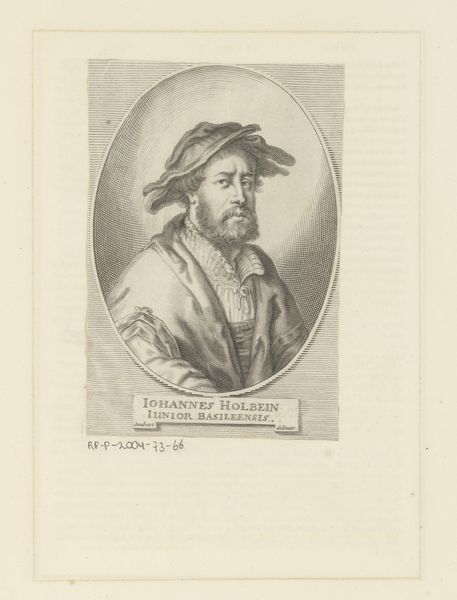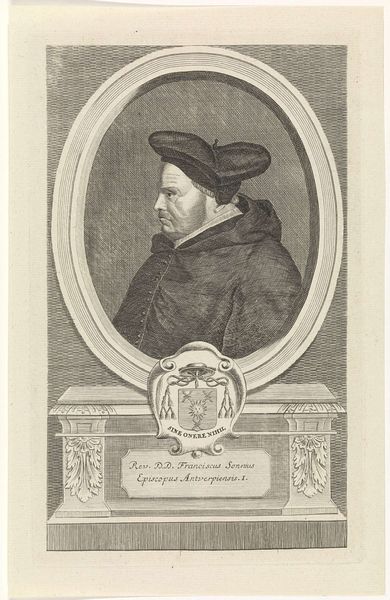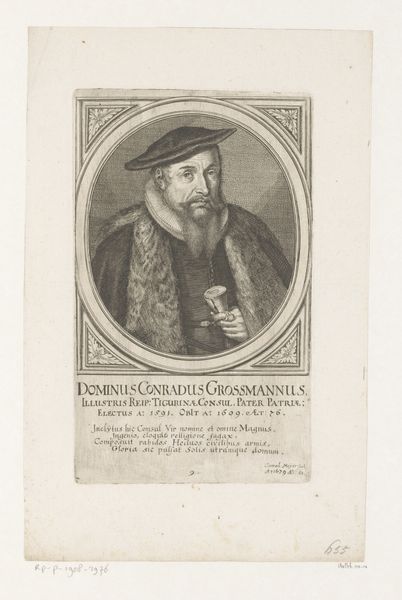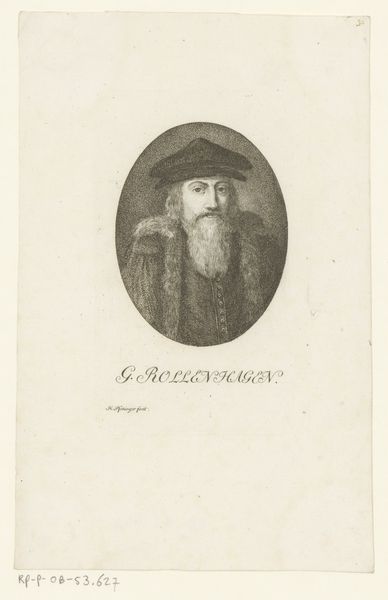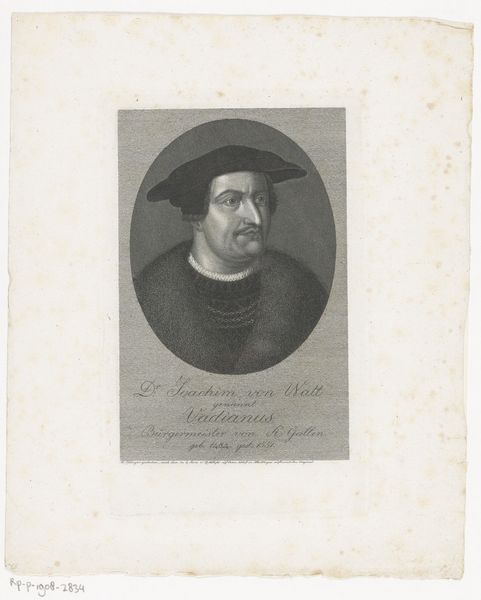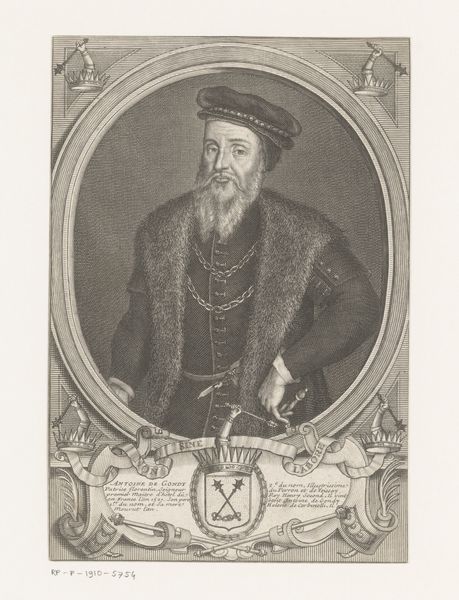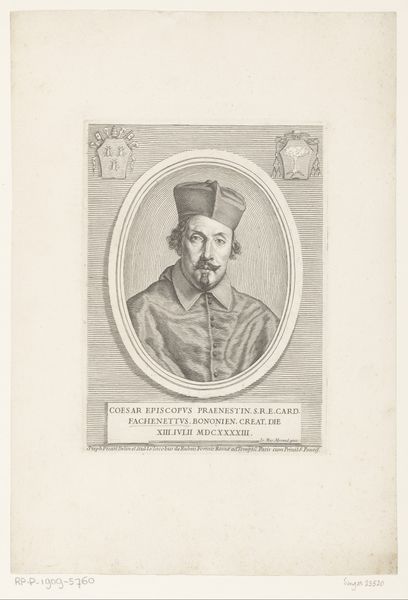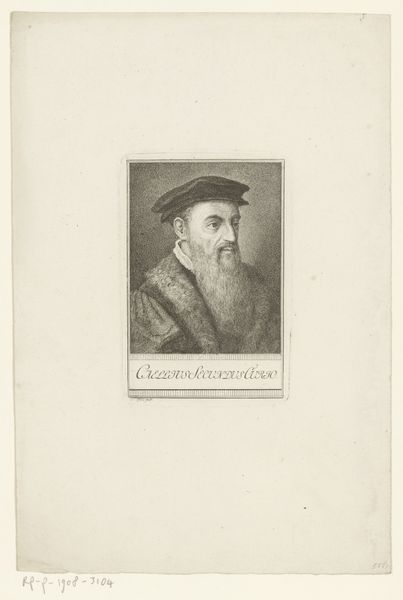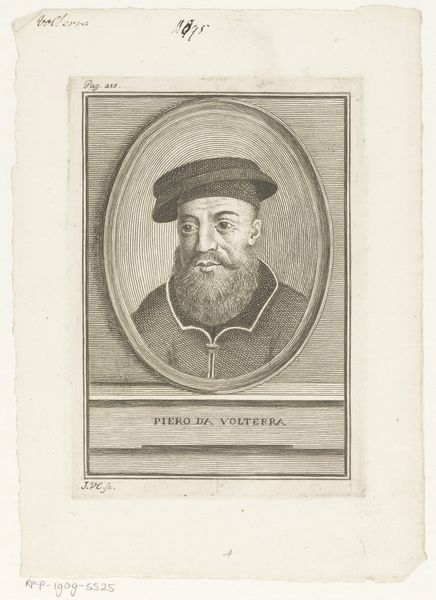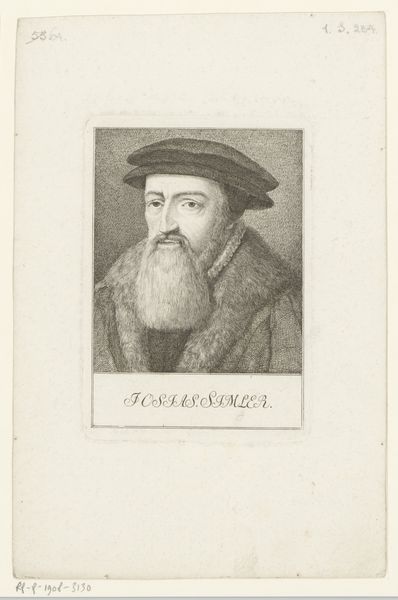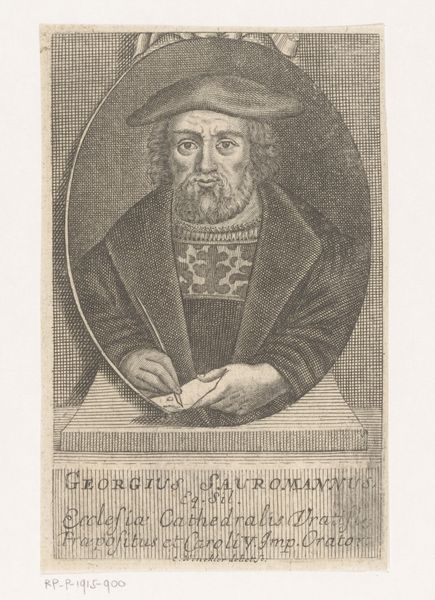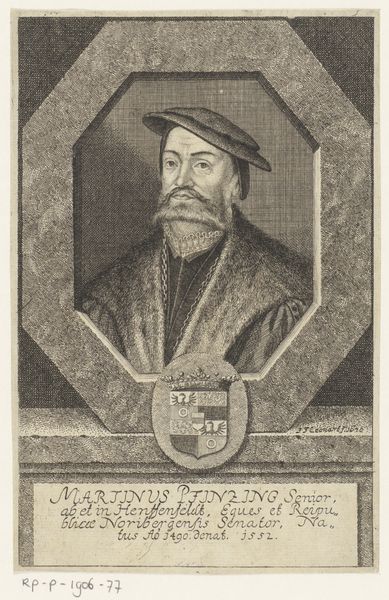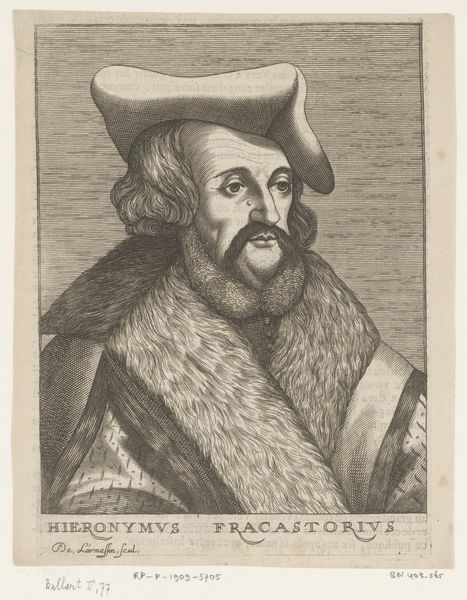
Dimensions: height 128 mm, width 87 mm
Copyright: Rijks Museum: Open Domain
Heinrich Pfenninger made this portrait of Johannes Oecolampadius, using an engraving technique. The artist would have used a tool called a burin to manually incise lines into a metal plate, which was then inked and printed. The most striking aspect is the sheer labor involved. Every line you see here was physically cut into the metal. The varying density of marks creates tone and shadow, giving the image its sense of depth and texture, reminiscent of a fine drawing. This was not just reproduction; it was production, a painstaking process that demanded skill and time. Prints like these were crucial in disseminating images and ideas during the period of Enlightenment. This portrait allowed for Oecolampadius' likeness to be spread far and wide, contributing to his enduring legacy. The very act of making this print, of transferring an image through labor-intensive means, highlights the intersection of art, craft, and the wider social context of image-making at the time. It challenges us to consider the value and effort embedded in what might seem, at first glance, like a simple reproduction.
Comments
No comments
Be the first to comment and join the conversation on the ultimate creative platform.
